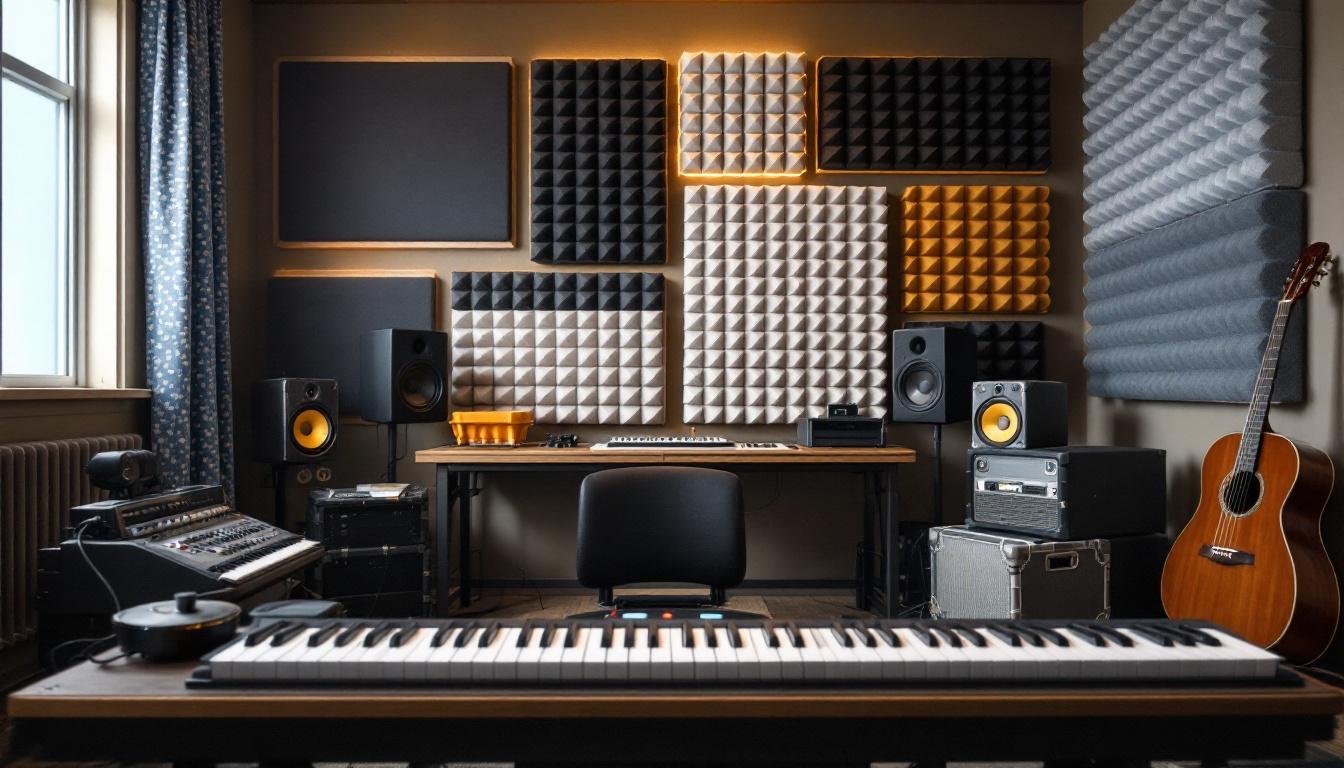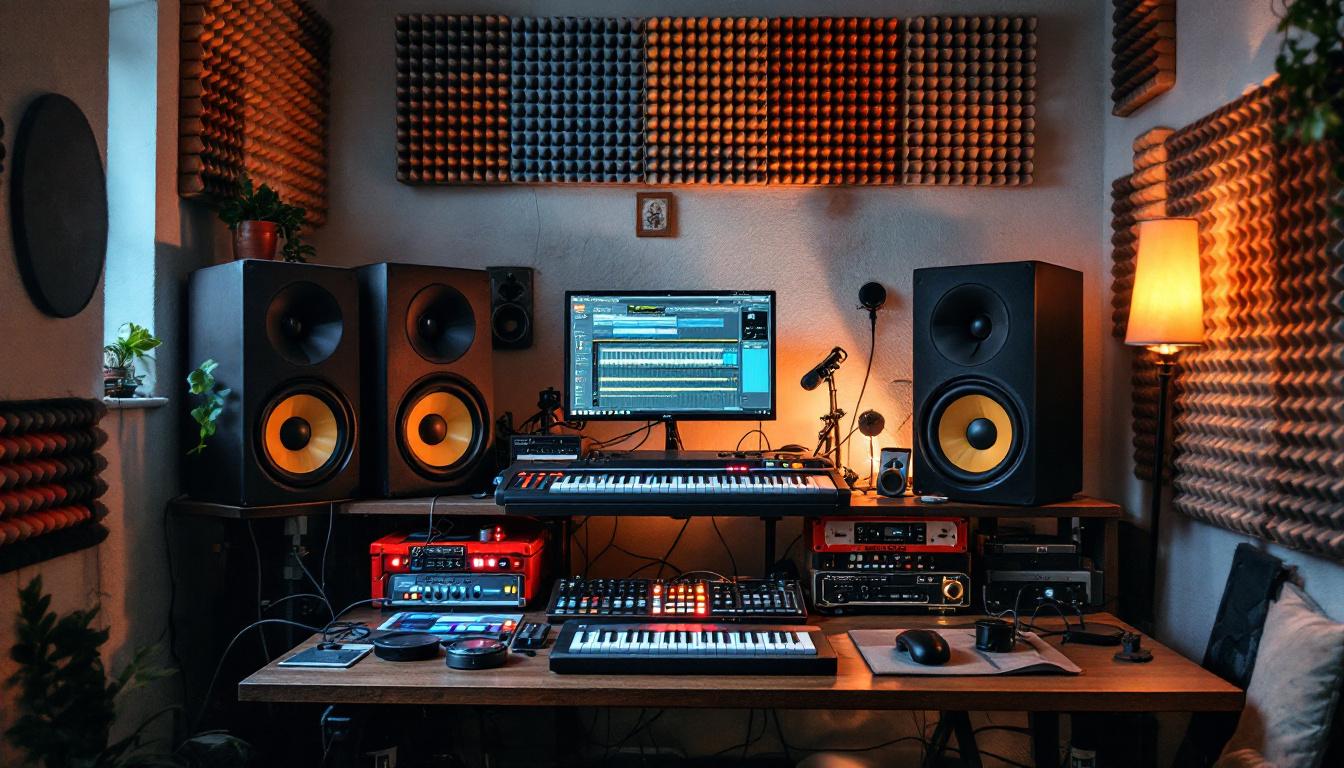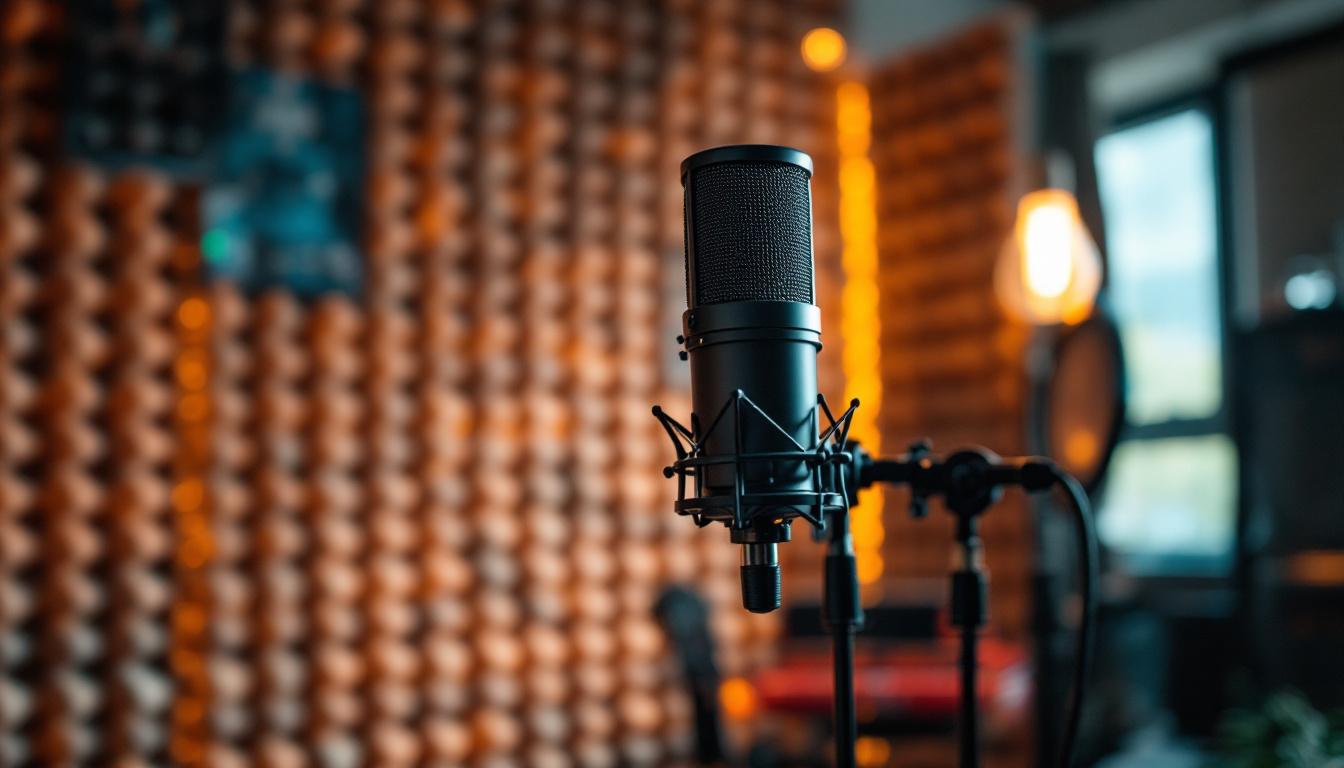So, you’ve just watched a YouTube tutorial on how to build a home studio, and the pièce de résistance? Egg cartons plastered all over the walls like some avant-garde art installation. But before you rush out to collect every carton from your local grocery store, let’s pause and ask the big question: Are egg cartons actually good for soundproofing?
Soundproofing and acoustic treatment are often misunderstood, leading to a lot of DIY myths floating around the internet. Today, we’re cracking open seven of the most common studio myths—including the infamous egg carton one—to separate fact from fiction. Spoiler alert: not everything that looks like it should work, actually does.
Myth 1: Egg Cartons = Soundproofing Magic
Egg cartons have long been the poster child for cheap and easy soundproofing. The idea is simple: those little nooks and crannies should absorb sound waves, right?
Well, not exactly.
Egg cartons are made of thin cardboard or foam, which might slightly diffuse sound, but they don’t actually absorb sound energy effectively. More importantly, they do almost nothing to block sound from entering or leaving a room. This means they won’t stop your neighbors from hearing your late-night jam sessions or prevent outside noise from ruining your recording.
Acoustic treatment requires materials designed to absorb or diffuse sound waves, like specialized foam panels or bass traps. Egg cartons just don’t have the density or thickness needed to make a real difference. So, while they might look cool and quirky, they’re more of a visual gimmick than a functional soundproofing solution.
In fact, the science behind soundproofing is quite fascinating. Sound waves travel through the air and can bounce off surfaces, creating echoes and reverberations. To effectively manage sound, one must consider the frequency of the sound being produced. Low frequencies, such as bass notes, require denser materials to absorb them, while higher frequencies can be diffused with lighter materials. This is why professional studios often use a combination of heavy curtains, thick carpets, and acoustic panels to create an optimal sound environment.
Moreover, there are numerous alternatives to egg cartons that are both effective and aesthetically pleasing. For instance, acoustic foam panels come in various shapes and colors, allowing you to customize your space while ensuring sound quality. Additionally, adding rugs, wall hangings, and even strategically placed furniture can contribute to a more acoustically friendly environment. By investing in proper soundproofing materials, you can create a space that not only looks great but also sounds fantastic.
Myth 2: Foam Panels = Soundproofing
If egg cartons are the rookie mistake, foam panels are the popular kid everyone trusts. But here’s the catch: foam panels are great for improving the sound quality inside a room by reducing echoes and reverberation, but they don’t actually soundproof.

Soundproofing is about blocking sound transmission between rooms, which requires mass and airtight construction. Foam panels are lightweight and porous, so they absorb sound waves inside the room but don’t stop sound from passing through walls or ceilings.
Think of foam panels as the room’s “acoustic makeup” — they help your recordings sound clear and professional but won’t keep your noisy neighbors at bay.
To truly achieve soundproofing, one must consider materials that add density and mass to the walls, such as drywall, mass-loaded vinyl, or specialized soundproofing panels designed to block sound rather than just absorb it. For instance, adding a second layer of drywall with soundproofing glue in between can significantly reduce sound transmission. Additionally, sealing gaps around windows and doors with acoustic caulk can further enhance the sound isolation of a room, ensuring that the outside noise stays outside where it belongs.
Moreover, it’s essential to understand the role of bass traps in a well-rounded acoustic treatment plan. While foam panels can help with mid and high frequencies, bass traps are specifically designed to manage low-frequency sounds that can be particularly troublesome in smaller spaces. By strategically placing bass traps in corners, you can effectively control the low-end rumble that often plagues home studios, creating a more balanced and professional sound environment. Therefore, while foam panels are a valuable tool in the acoustic treatment arsenal, they should be part of a larger strategy that includes soundproofing techniques and other acoustic treatments for optimal results.
Myth 3: More Panels = Better Sound
It’s tempting to cover every inch of your studio walls with foam panels and call it a day. But more isn’t always better when it comes to acoustic treatment.
Over-treating a room can make it sound dead and lifeless, sucking out the natural warmth and ambiance that give music its character. The goal is to find a balance between absorption, diffusion, and reflection.
Strategically placing panels where sound waves bounce the most—like first reflection points—will yield better results than plastering foam everywhere. Quality over quantity, folks!
Consider incorporating different types of acoustic treatments into your space. While foam panels are excellent for absorbing high frequencies, adding diffusers can help scatter sound waves, creating a more vibrant and lively environment. This combination allows for a more natural sound, preserving the richness of your recordings while minimizing unwanted echoes and resonances.
Additionally, don’t forget about the impact of your room’s shape and furnishings. Hard surfaces like floors and ceilings can reflect sound, while carpets, curtains, and furniture can absorb it. By thoughtfully arranging your studio, you can enhance its acoustic properties without relying solely on foam panels. Experimenting with various materials and layouts can lead to a more dynamic sound that truly brings your music to life.
Myth 4: You Need Expensive Gear to Sound Good
Here’s some good news: you don’t need to break the bank to get decent sound quality. While professional studios invest in high-end microphones, preamps, and monitors, a lot of great music has been made with modest setups.

Good technique, proper mic placement, and basic acoustic treatment (like thick blankets or curtains) can go a long way. Plus, many affordable audio interfaces and microphones offer surprisingly good quality for the price.
So, don’t let the myth of “expensive gear equals good sound” hold you back from creating your masterpiece. In fact, many successful musicians and producers started with nothing more than a laptop and a basic USB microphone. The key is to focus on honing your skills and understanding the fundamentals of sound. Learning how to EQ, compress, and mix effectively can often make a more significant difference than the gear itself.
Additionally, the rise of digital audio workstations (DAWs) has democratized music production. With a plethora of free or low-cost plugins available, you can achieve professional-sounding results without investing in pricey software. Many of these tools emulate high-end gear, allowing you to experiment with different sounds and techniques that were once only accessible to those with deep pockets. Embrace the creativity that comes from working with what you have, and you might just discover a unique sound that sets you apart from the crowd.
Myth 5: Bass Traps Go Anywhere
Bass traps are the superheroes of acoustic treatment, designed to absorb low-frequency sound waves that tend to build up in corners. But here’s the kicker: you can’t just slap them anywhere and expect magic.
Bass frequencies are tricky because they have long wavelengths and tend to accumulate in room corners and along edges. That’s where bass traps do their best work. Placing them in the middle of walls or ceilings is like putting a band-aid on a broken leg—ineffective.
Proper placement is key to taming those pesky bass booms and achieving a balanced sound.
Myth 6: Flat Walls Are Fine
Flat, parallel walls might be architecturally simple, but acoustically, they’re a recipe for disaster. Sound waves bounce back and forth between flat surfaces, causing flutter echoes and standing waves that muddy your recordings.
Acoustic treatment aims to break up these reflections with diffusers, absorbers, or angled surfaces. Without it, your studio becomes an echo chamber that’s tough to mix or record in.
So, don’t underestimate the power of a little wall texture or angled panels to improve your sound.
Myth 7: My Mic Picks Up the Room, Not the Mix
It’s easy to blame your microphone for picking up too much room noise or sounding “off.” But often, the problem lies in the room’s acoustics, not the mic itself.

Microphones are designed to capture sound, and if your room has a lot of unwanted reflections or noise, that’s what the mic will pick up. Treating your room acoustically and using proper mic techniques can drastically improve your recordings.
So instead of blaming your gear, look at your environment and setup first.
Final Thoughts: Smashing Myths, Not Egg Cartons
Soundproofing and acoustic treatment are nuanced arts, and while DIY solutions can be tempting, it’s important to separate myths from facts. Egg cartons might be charming and cheap, but they won’t transform your studio’s sound or keep the noise out.
Investing in proper acoustic treatment, understanding room dynamics, and focusing on technique will always yield better results than quick fixes. So, save those egg cartons and give your studio the sound it deserves.